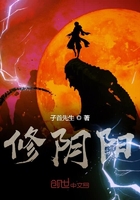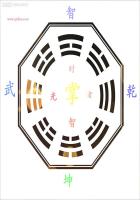The Modoc war against the warriors of Captain Jack in 1873 was waged in the lava beds of Oregon, and it had the distinction of being one of the first Indian wars to be well reported in the newspapers.We heard a great deal of the long and trying campaigns waged by the Army in revenge for the murder of General Canby in his council tent.We got small glory out of that war, perhaps, but at last we hanged the ringleader of the murderers;and the extreme Northwest remained free from that time on.
Far in the dry Southwest, where home-building man did not as yet essay a general occupation of the soil, the blood-thirsty Apache long waged a warfare which tried the mettle of our Army as perhaps no other tribes ever have done.The Spaniards had fought these Apaches for nearly three hundred years, and had not beaten them.They offered three hundred dollars each for Apache scalps, and took a certain number of them.But they left all the remaining braves sworn to an eternal enmity.The Apaches became mountain outlaws, whose blood-mad thirst for revenge never died.
No tribe ever fought more bitterly.Hemmed in and surrounded, with no hope of escape, in some instances they perished literally to the last man.General George Crook finished the work of cleaning up the Apache outlaws only by use of the trailers of their own people who sided with the whites for pay.Without the Pima scouts he never could have run down the Apaches as he did.
Perhaps these were the hardest of all the Plains Indians to find and to fight.But in 1872 Crook subdued them and concentrated them in reservations in Arizona.Ten years later, under Geronimo, a tribe of the Apaches broke loose and yielded to General Crook only after a prolonged war.Once again they raided New Mexico and Arizona in 1885-6.This was the last raid of Geronimo.He was forced by General Miles to surrender and, together with his chief warriors, was deported to Fort Pickens in Florida.
In all these savage pitched battles and bloody skirmishes, the surprises and murderous assaults all over the old range, there were hundreds of settlers killed, hundreds also of our army men, including some splendid officers.In the Custer fight alone, on the Little Big Horn, the Army lost Custer himself, thirteen commissioned officers, and two hundred and fifty-six enlisted men killed, with two officers and fifty-one men wounded; a total of three hundred and twenty-three killed and wounded in one battle.
Custer had in his full column about seven hundred men.The number of the Indians has been variously estimated.They had perhaps five thousand men in their villages when they met Custer in this, the most historic and most ghastly battle of the Plains.It would be bootless to revive any of the old discussions regarding Custer and his rash courage.Whether in error or in wisdom, he died, and gallantly.He and his men helped clear the frontier for those who were to follow, and the task took its toll.Thus, slowly but steadily, even though handicapped by a vacillating governmental policy regarding the Indians, we muddled through these great Indian wars of the frontier, our soldiers doing their work splendidly and uncomplainingly, such work as no other body of civilized troops has ever been asked to do or could have done if asked.At the close of the Civil War we ourselves were a nation of fighting men.We were fit and we were prepared.The average of our warlike qualities never has been so high as then.The frontier produced its own pathfinders, its own saviors, its own fighting men.
So now the frontier lay ready, waiting for the man with the plough.The dawn of that last day was at hand.













